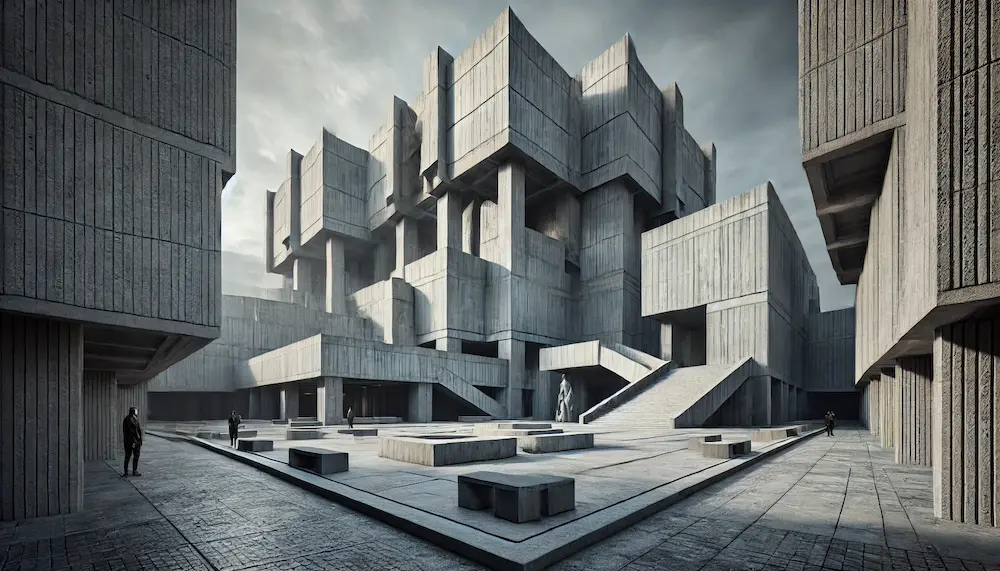Brutalist squares, emerging prominently in the mid-20th century, are characterized by their use of raw concrete, monumental scale, and functional design. These public spaces reflect the Brutalist architectural movement’s emphasis on material honesty and structural expression, often evoking strong reactions due to their austere aesthetics.
History and Origins of Brutalist Squares
The Brutalist movement originated in the 1950s, with architects seeking to convey the functionality and raw beauty of materials, particularly béton brut (raw concrete). This approach was partly a response to post-war reconstruction needs, emphasizing utilitarian design and cost-effective materials. In urban planning, Brutalist principles were applied to public squares, creating spaces that were both functional and emblematic of the era’s architectural ethos.
Key Features of Brutalist Squares
- Exposed Concrete: The predominant use of raw, unfinished concrete surfaces, showcasing the material’s natural texture.
- Monumental Scale: Large, imposing structures and open spaces designed to convey strength and durability.
- Geometric Forms: Emphasis on bold, angular shapes and repetitive modular elements.
- Functional Design: Prioritization of utility, with minimal ornamental detailing.
Applications of Brutalist Squares
Brutalist squares have been implemented in various urban contexts, serving as focal points for civic activities and social interaction. Notable examples include:
- Boston City Hall Plaza, USA: Adjacent to the Brutalist Boston City Hall, this expansive plaza exemplifies the movement’s emphasis on open, functional public spaces.
- Atarim Square, Tel Aviv, Israel: Designed by architect Yaakov Rechter, this complex is a notable example of Brutalist architecture in Israel, featuring multi-level structures and open public areas.
Considerations When Visiting Brutalist Squares
- Architectural Appreciation: Understanding the historical and design principles of Brutalism can enhance appreciation of these spaces.
- Public Perception: Brutalist architecture often evokes mixed reactions; recognizing this can provide insight into the societal impact of architectural styles.
- Preservation Efforts: Many Brutalist structures face threats of demolition; awareness of preservation initiatives is crucial for their continued existence.
Conclusion
Brutalist squares represent a significant period in architectural history, emphasizing material honesty and functional design. While often polarizing, these spaces offer unique insights into mid-20th-century urban planning and continue to influence contemporary architectural discourse.
